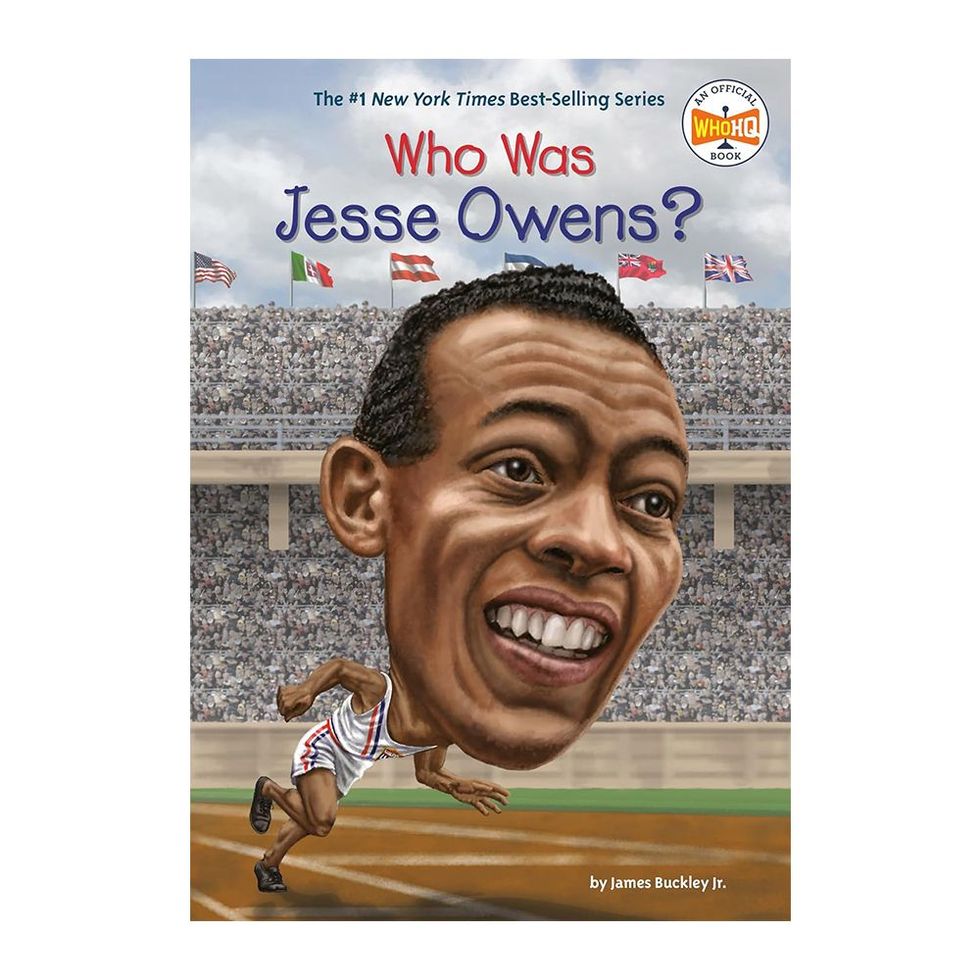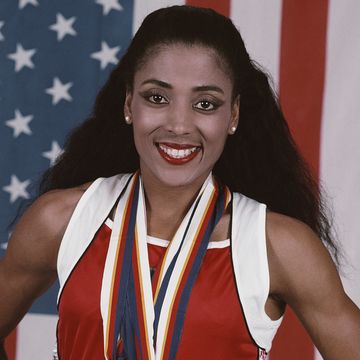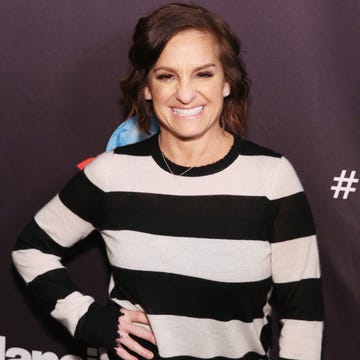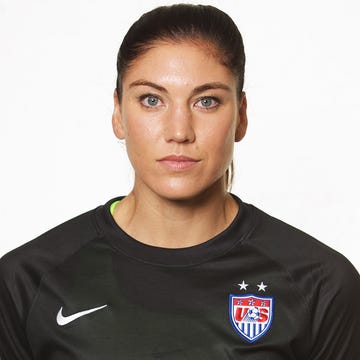1913-1980
Who Was Jesse Owens?
Jesse Owens is generally considered the greatest track and field athlete in history—and one of the greatest athletes, period. His athletic career began in high school, and he won three track and field events at the 1933 National Interscholastic Championships. Two years later, while competing for Ohio State University, “The Buckeye Bullet” equaled one world record and broke three others before qualifying and competing in the 1936 Olympics in Berlin. There, he won four gold medals and set two world records. His athletic career ended abruptly that same year when he dropped out of a post-Olympics tour and was subsequently banned from future competitions. Owens worked a variety of jobs over the next several decades, including as a public speaker, and occasionally raced amateur runners for money. He died from lung cancer at age 66 in March 1980.
Quick Facts
FULL NAME: James Cleveland Owens
BORN: September 12, 1913
DIED: March 31, 1980
BIRTHPLACE: Oakville, Alabama
SPOUSE: Ruth Owens (1935-1980)
CHILDREN: Gloria, Beverly, and Marlene
ASTROLOGICAL SIGN: Virgo
Childhood
Jesse Owens was born James Cleveland Owens on September 12, 1913, in Oakville, Alabama. The son of a sharecropper and the grandson of enslaved people, Owens was the youngest of 10 children.
A frail child, Owens was often sick with chronic bronchial congestion and pneumonia. Still, he was expected to work, and at age 7, he was picking up to 100 pounds of cotton a day to help his family put food on the table.
At 9 years old, Owens moved with his family to Cleveland, where the young “J.C.” discovered a world far different than the slower, Southern life he’d known. School proved to be one of the bigger changes. Gone was the one-room schoolhouse he’d attended in Alabama, replaced by a bigger setting with stricter teachers.
Here, Owens earned the nickname that would stick with him the rest of his life: One of his instructors, unable to decipher his thick Southern accent, believed the young athlete said his name was “Jesse,” when he, in fact, had said “J.C.”
Rising Track and Field Star
At East Technical High School, Owens made a name for himself as a nationally recognized sprinter, setting records in the 100- and 220-yard dashes as well as the long jump at the 1933 National Interscholastic Championships. After graduating, Owens enrolled at Ohio State University, where he continued to flourish as an athlete.
At the 1935 Big Ten Championships, the “Buckeye Bullet,” as he was also known, overcame a severe tailbone injury and tied a world record in the 100-yard dash—and set a long jump record of 26-8 ¼ that stood for 25 years. Owens also set new world marks in the 220-yard dash and in the 220-yard low hurdles. Some have called this incredible showing “the greatest single day performance in athletic history.”
His dominance at the Big Ten games was par for the course for Owens that year, which saw him win four events at the NCAA Championships, two events at the Amateur Athletic Union (AAU) Championships, and three others at the Olympic Trials. In all, Owens competed in 42 events that year, winning them all.
1936 Olympics and Its Aftermath
For Adolf Hitler and the Nazis, the 1936 Berlin Olympic Games were expected to be a German showcase and a statement for Aryan supremacy. Hitler lambasted America for including Black athletes on its Olympic roster. But it was the African American participants who helped cement America’s success at the Olympic Games. In all, the United States won 11 gold medals, six of them by Black athletes.
Owens was easily the most dominant athlete to compete. The 22-year-old captured four gold medals—in the 100 meter, long jump, 200 meter, and 400-meter relay—and broke two Olympic records along the way. Owens’ world record for the long jump lasted for 25 years until being broken by Olympian Ralph Boston in 1960.
Several contemporary newspaper accounts report that Hitler waved at or saluted Owens immediately after his victory in the 100-meter event. However, because Hitler had previously stopped inviting any athletes into his box at the games, other reports accused Hitler of “snubbing” Owens, and the story was repeated in various American newspapers.
While Owens helped the United States triumph at the 1936 Olympics, his return home wasn’t met with the kind of fanfare one might expect. President Franklin D. Roosevelt failed to meet with Owens and congratulate him, as was typical for champions. The mild-mannered Owens seemed not the least bit surprised by his home country’s hypocrisy.
“When I came back to my native country, after all the stories about Hitler, I couldn’t ride in the front of the bus,” he said. “I had to go to the back door. I couldn’t live where I wanted. I wasn’t invited to shake hands with Hitler, but I wasn’t invited to the White House to shake hands with the president, either.”
The athlete wasn’t properly recognized until 50 years later when Gerald Ford awarded him the Presidential Medal of Freedom in 1976.
Life After the Olympics
Immediately following his incredible performance at the 1936 Olympic Games, Owens was required to join an exhibition tour organized by the AAU and the American Olympic Committee (the tour was arranged to cover the cost of sending athletes to Berlin). He, along with other members of the U.S. Olympic track team, traveled to Cologne, Germany; Prague; and other cities in Europe. Owens even helped set a new world record in the 440-yard sprint relay during an event in London.
However, the athletes received no compensation for their efforts, the travel schedule was exhausting, and Owens had essentially no money to support himself. In addition, he had received lucrative offers to make public appearances back in the United States. Owens refused to continue on the tour, and in response, the AAU disbarred him in August 1936, making him ineligible to compete in future AAU-sponsored events. His athletic career abruptly came to an end.
Owens’ transition into a post-track career was challenging. He left Ohio State without a degree. He returned to the school in the fall of 1940 but withdrew before graduating (OSU awarded him an honorary doctorate in 1973). Unfortunately, the offers for public appearances, including invitations to join Broadway shows, fell through. To support himself and his family, Owens took up a wide range of jobs over the years. He raced local amateur sprinters for money. He opened a chain of dry cleaning stores, but the business failed. Through a friend, he found a job at Ford Motor Company and eventually became director of its personnel department for Black employees as well as a public relations executive.
In 1946, he left Ford and became the owner of the Portland Rosebuds, a baseball team playing in the West Coast Baseball Association (WCBA), a newly created Negro baseball league. To attract bigger crowds, Owens would race a horse across the outfield. After two months, however, the WCBA folded.
He eventually found a job with the government of Illinois, where he visited schools across the state and shared his insights into physical education. He also found work as a public speaker: He traveled around the globe as a goodwill ambassador for the U.S. government, and he booked speaking engagements with various corporate clients.
Author
Owens co-authored several books throughout his life. In 1970, he published Blackthink: My Life As Black Man and White Man, in which he criticized Black militancy and shared his thoughts on the struggle for civil rights. In the ensuing years, however, his views evolved. In 1972, he published I Have Changed, in which he discussed how he grew more sympathetic toward Black militancy and civil rights leaders like Eldridge Cleaver and Angela Davis.
He also published Track and Field, a book outlining his perspectives on running and field events, in 1976. Another autobiography, Jesse, the Man Who Outran Hitler, was published in 1978.
Wife and Kids
Owens was married for 44 years to Ruth Owens. Ruth, whose given name was Minnie Ruth Solomon, was born in rural Georgia. She and her family moved to Cleveland, and she met Jesse in junior high school.
Their wedding was held in Cleveland on July 5, 1935. However, later in life, Jesse falsely claimed he and his wife got married before their first child, Gloria, was born in 1932. The couple had two more daughters, Beverly and Marlene.
After Jesse’s death, Ruth carried on her husband’s legacy as the longtime chairwoman of the Jesse Owens Foundation, an organization dedicated to supporting the development of young people. She died in 2001 of heart failure.
Death and Legacy
Owens died at age 66 in Tucson, Arizona, on March 31, 1980. The cause of his death was lung cancer. Owens had smoked up to a pack of cigarettes a day for a good deal of his life.
Owens is generally considered the greatest track and field athlete in history—and one of the greatest athletes, period. In addition to receiving the Presidential Medal of Freedom in 1976, President Jimmy Carter awarded him the Living Legend Award in 1979, and in 1990, President George H.W. Bush posthumously awarded him the Congressional Medal of Honor.
Although Owens’ world records have since been broken, his athletic legacy continues. He was part of the first class of athletes to be inducted into the U.S. Olympic Hall of Fame in 1983, and each year, USA Track and Field bestows the Jesse Owens Award on the year’s best track and field athlete.
Movies and Books
Owens’ life and athletic achievements have been the subject of many books and movies in the decades since his death. The Emmy-award-winning TV film The Jesse Owens Story was released in 1985, and the biography Jesse Owens: An American Life was published in 1988. Another biography, Triumph: The Untold Story of Jesse Owens and Hitler’s Olympics, came out in 2008. In 2012, PBS released a documentary on Owens as part of its American Experience series.
The 2016 movie Race depicts Owens’ budding track and field stardom in college through his wins at the 1936 Olympic Games in Berlin, where he defied Hitler’s vision of Aryan supremacy. Made in consultation with Owens’ three daughters, the movie stars Stephan James as Owens and Jason Sudeikis as Larry Snyder, Owens’ coach at Ohio State University.
Quotes
- The battles that count aren’t the ones for gold medals. The struggles within yourself—the invisible, inevitable battles inside all of us—that’s where it’s at.
- I wanted no part of politics. And I wasn’t in Berlin to compete against any one athlete. The purpose of the Olympics, anyway, was to do your best. As I’d learned long ago… the only victory that counts is the one over yourself.
- I loved [running] because it was something you could do all by yourself, and under your own power.
- I think the greatest moment that a person can have is to stand on a victory stand, far away from home, and then, from the distance you can hear the strains of “The Star-Spangled Banner.”
- All we athletes get out of this Olympic business is a view out of a train or airplane window. It gets very tiresome, it really does.
- If I had to do it all over again, I probably would. More people have been kind to me than not, and they have looked upon my accomplishments more than the color of my skin.
- Awards become tarnished, and diplomas fade… Championships are mythical things. They have no permanence.
- In America, anyone can become somebody. Does that sound corny in this day and age? Well, it happened to me, and I believe it can happen to anybody in one way or another.
- Success is not easily achieved. Be prepared for sacrifice. Work hard. Take instruction... There is no shortcut to the ultimate goal.
- You see, Black isn’t beautiful. White isn’t beautiful. Skin-deep is never beautiful.
- One chance is all you need.
- We all have dreams. But in order to make dreams come into reality, it takes an awful lot of determination, dedication, self-discipline and effort.
- Awards become corroded, friends gather no dust.
- When I came back to my native country, after all the stories about Hitler, I couldn’t ride in the front of the bus. I had to go to the back door. I couldn’t live where I wanted. I wasn’t invited to shake hands with Hitler, but I wasn’t invited to the White House to shake hands with the president, either.
Fact Check: We strive for accuracy and fairness. If you see something that doesn’t look right, contact us!
The Biography.com staff is a team of people-obsessed and news-hungry editors with decades of collective experience. We have worked as daily newspaper reporters, major national magazine editors, and as editors-in-chief of regional media publications. Among our ranks are book authors and award-winning journalists. Our staff also works with freelance writers, researchers, and other contributors to produce the smart, compelling profiles and articles you see on our site. To meet the team, visit our About Us page: https://www.biography.com/about/a43602329/about-us
Michael Charboneau is a freelance writer with years of experience covering gear and the outdoors. He has written for a variety of publications, including Men’s Journal, Runner’s World, and the Los Angeles Times. When he’s not writing, he can be found running, hiking, and biking in the mountains around Los Angeles, where he lives.

















